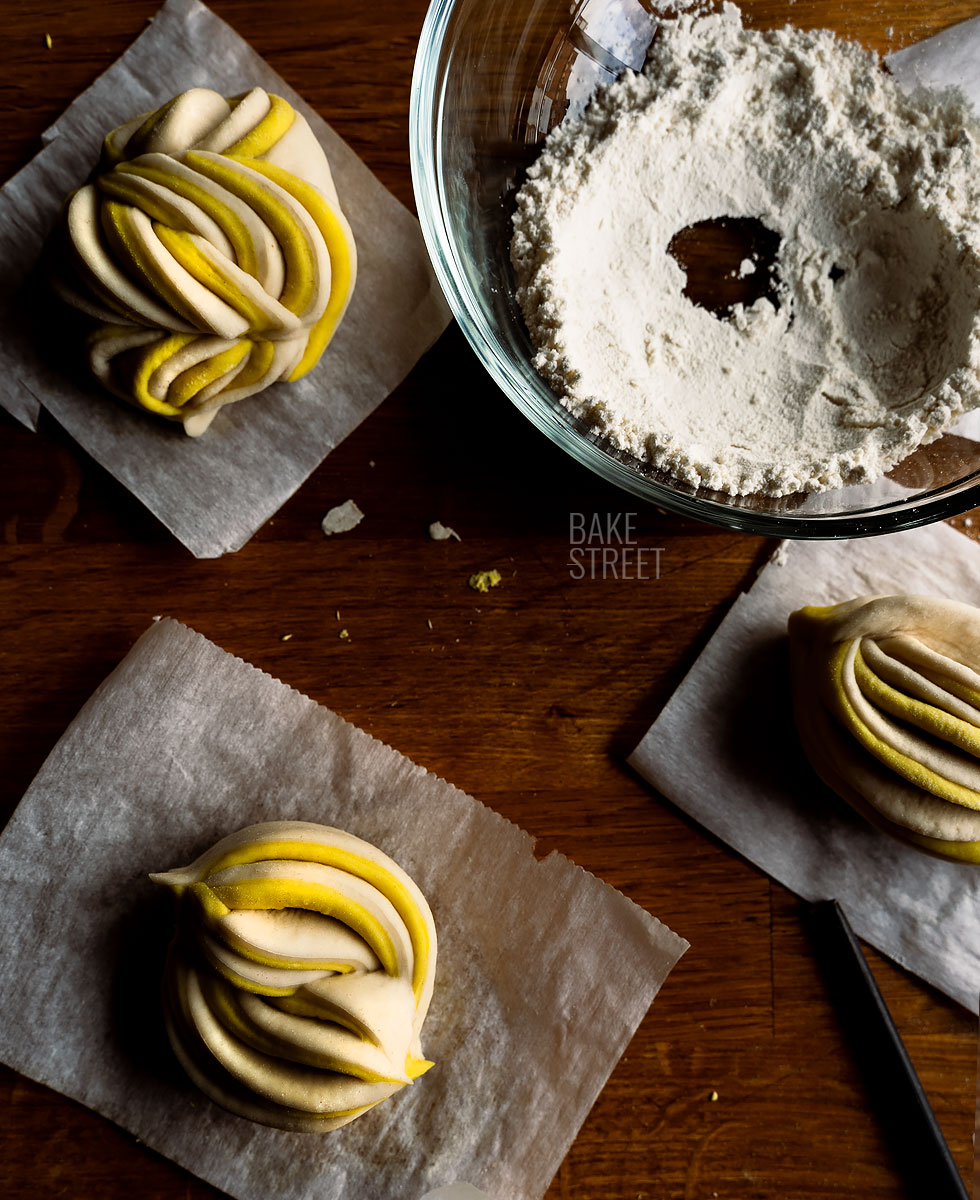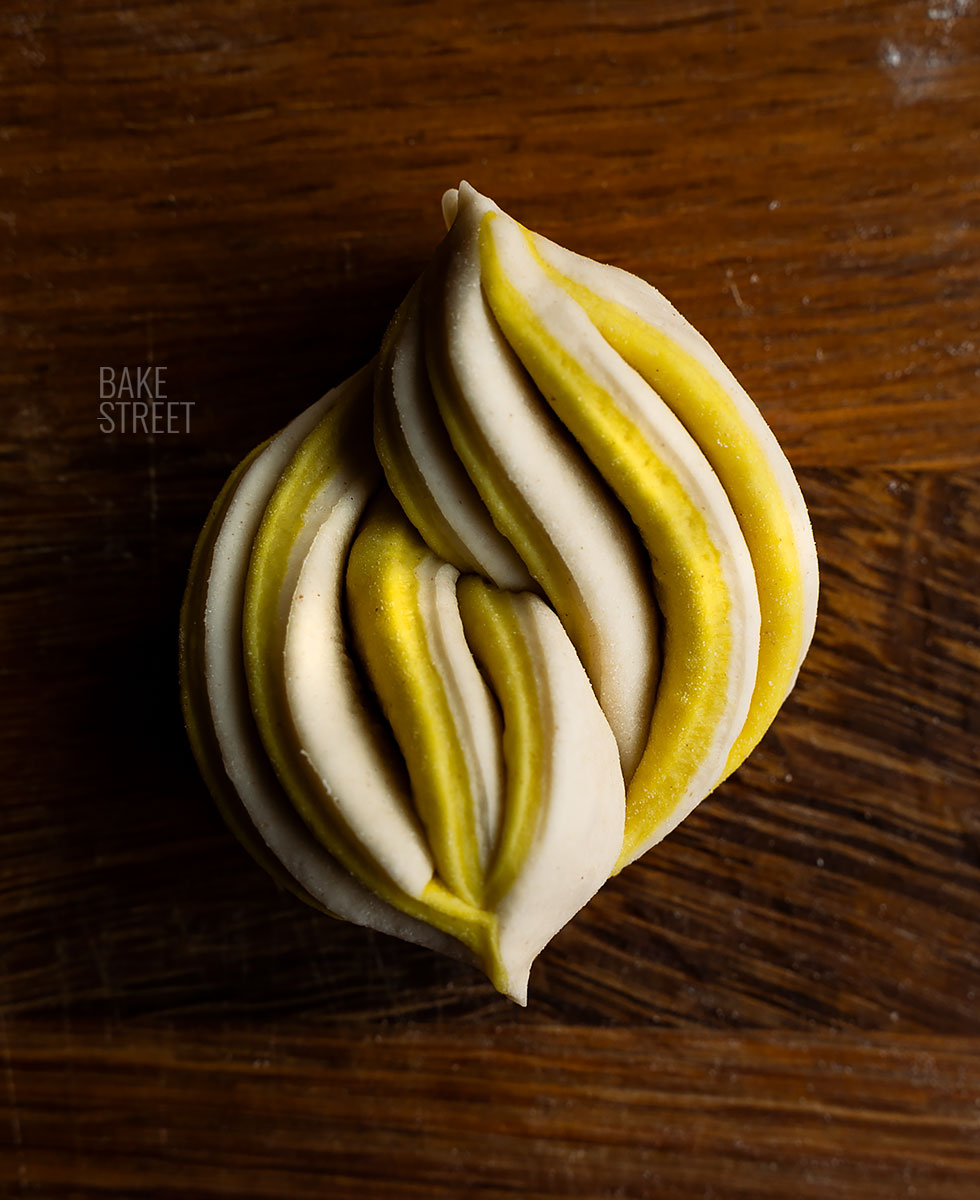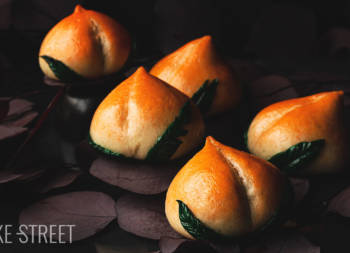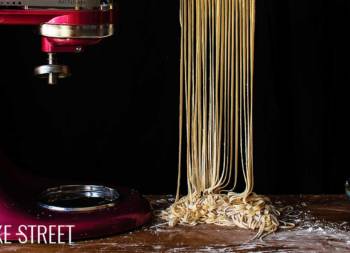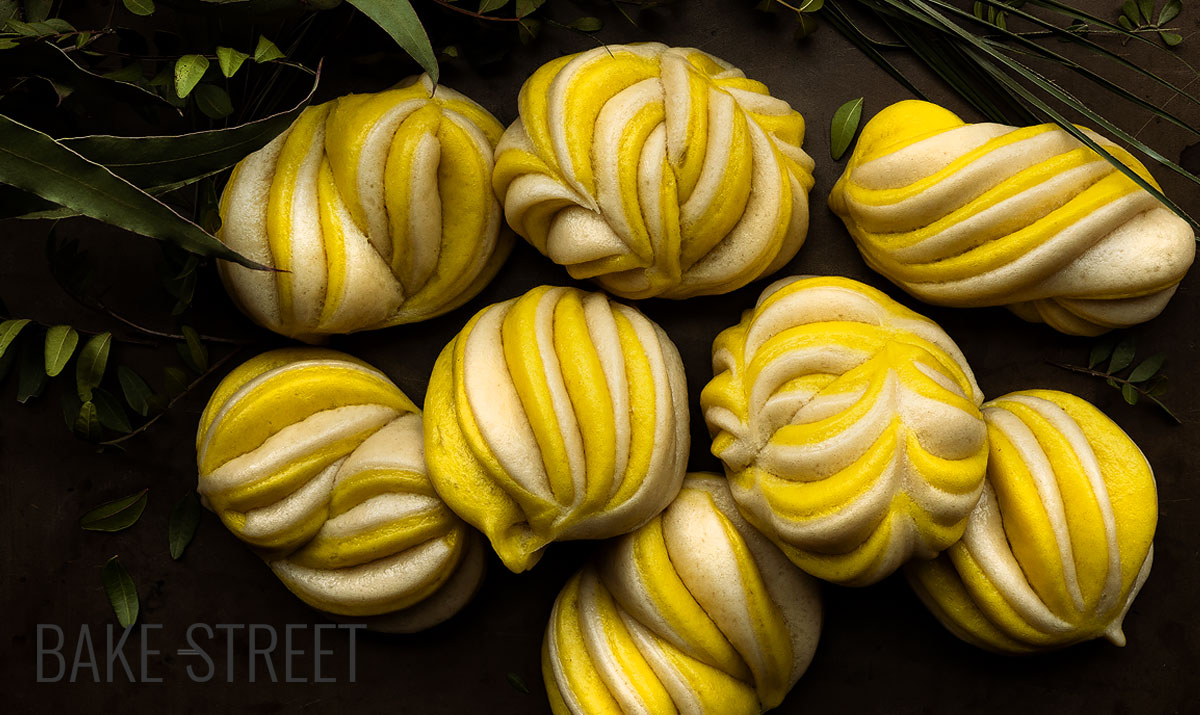
Mantou, Chinese yuzu steamed bun
I have to admit that I’ve taken a ” addiction ” for steamed breads…. Since I made the longevity peaches, I have not been able to stop trying different elaborations (and formations). And as I would love you to join me on this beautiful path, today I leave you with making Mantou, Chinese yuzu steamed bun.
First of all, I want to clarify that the original mantou is not flavored with any ingredient. But, like all preparations, it is normal that they evolve and acquire different formats, colors, flavors and aromas. If you prefer, you can make the mantou only with white dough.
Of course, this same recipe that I leave you can be simplified much more than it really is. And we would do it by carrying out a much simpler shaping. If you find it too complicated or laborious to shape them this way (although I know that you can 😉 ), in that case, you can just round the pieces and steam them. So if what scares you off is the shaping, do not stay with the desire to try them at home by making them in a simpler way. You will love them.
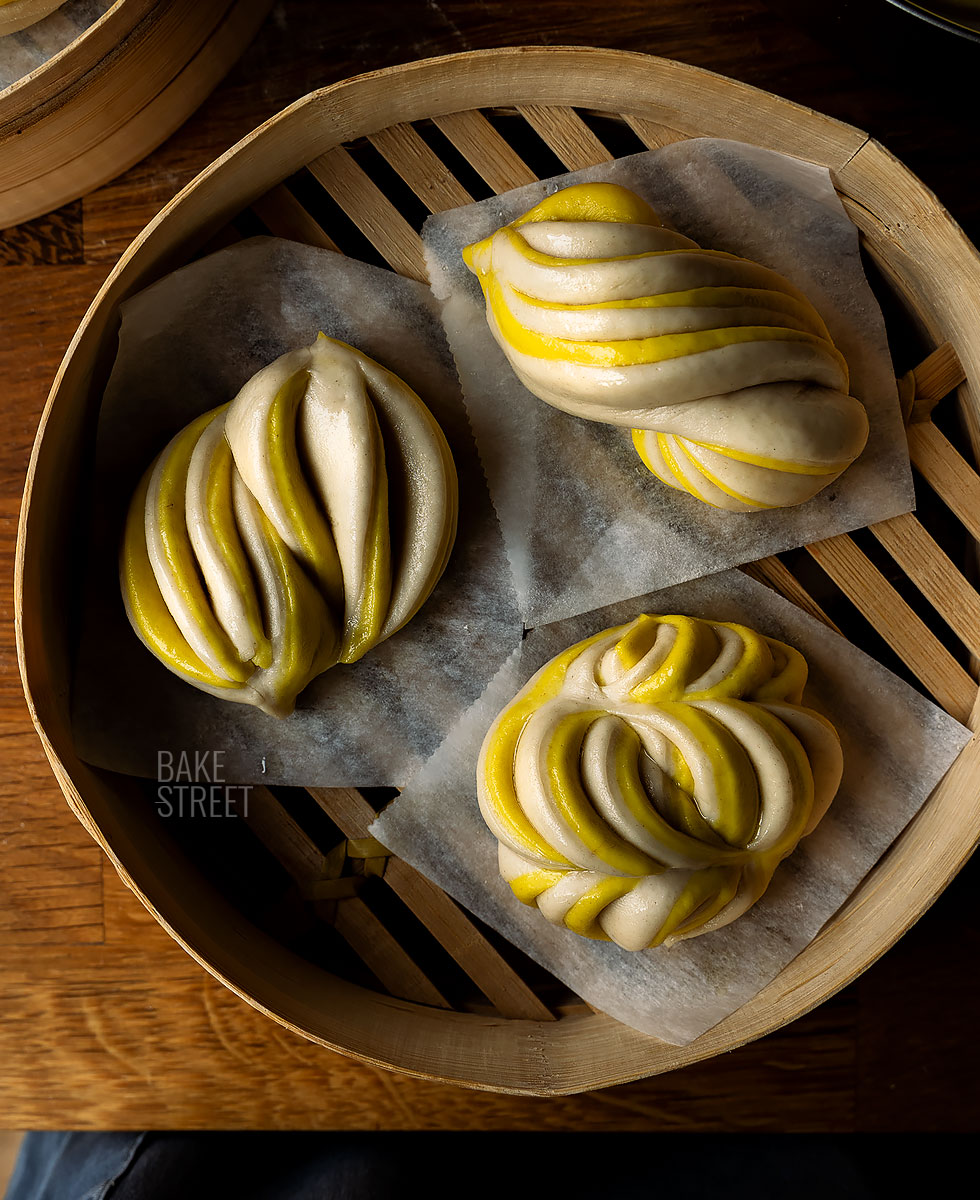
Mantou, what it is?
Chinese mantou chino (馒头) is an incredibly simple and absolutely delicious preparation. It is a steamed bun, with a very basic shape (a rounded piece) and it only consists of four ingredients: yeast, flour, salt and water. It is a very tender roll, without crust, with a mild and fairly neutral flavor, which makes it an ideal companion for countless dishes and side dishes.
Mantou are mostly prepared steamed and without filling, but they can also be fried and stuffed. There is a Chinese dessert called “gold and silver mantou“, consisting of a dish in which steamed mantou and fried mantou are combined alternately, served with a bowl of condensed milk to dip them and enjoy them, of course.
Bao are a variation of mantou with a different shape and are usually filled with both savory and sweet preparations.
Mantou origin.
In “The Origin of Things” written during the Northern Song Dynasty (1127-1279 AD) by Gao Cong, he details that the first documented appearance of the mantou dates back to the Warring States period of China (220-280 AD), nearly 18 centuries ago, during which time Three Kingdoms, Shu, Wu and Wei, contended for control of ancient China.
As described by Gao, the chancellor and leader Zhuge Liang, a brilliant political strategist of the kingdom of Shu, while returning from a campaign against a group of “barbarians” from the south, came to the banks of the Lushui River.
It is said that the river was poisoned and dangerous, and that, if a human ventured across it, he would perish, unless the God of Rivers received offerings. According to local tradition, the only way to make the crossing safely was to make offerings to the river gods with decapitated heads. Only in this way could the waters be appeased.
Zhuge, on the other hand, did not want to carry out human sacrifices, so he ordered his soldiers to make animal heads out of wheat dough and stuffed with meat.
This act succeeded in fooling the river gods and the ships were able to cross safely. Zhuge’s creative maneuver achieved popularity and, from that moment on, these stuffed buns or breads became known as “Barbarian Heads“.
A popular Chinese legend relates that the name mantou actually originated from the homophone word 蠻 頭 mántóu, which literally means “barbarian’s head“.
In China, it is customary to give a name to its preparations based on the ingredients they contain or to give them an attractive name in order to stimulate the appetite. The name “Barbarian’s Head” does not fit in with either of the two previous ones.
Another possible origin.
There is another source that discusses the possible origins of mantou, “Soup for the Qan“, a medicinal cookbook written by the Uyghur imperial physician Hu Sihui for the Mongol emperor of the Yuan dynasty (1279-1368 AD), which mentions a dish similar to mantou. Early mantou had filling, more like today’s bao (包) or baozi.
It was during the 13th century when the Kahns conquerors of the Yuan dynasty spread these small stuffed dumplings throughout their empire because of the ease at which they could be eaten.
Today, Korea has the mandu(referring to both filled and unfilled dumplings) and in Japan the manju. Turkey claims mantias an indigenous food, while Afghanistan, Saudi Arabia and Pakistan prepare stuffed mantu. Mongolia has stuffed buuzand unfilled mantuun buuz, considered a traditional dish, but probably descended from bao and mantou.
In Tibet and Nepal they consume stuffed momo, a word that also originated in the Jiangnan region of China, where momo (饃饃) means bun without filling. Vietnam prepares banh bao, Filipinos siyopaw, Thailand salopaoand, centuries later, they have even reached Hawaii as manapua.
All these variations, or evolutions, have no native meanings, suggesting that, despite their enthusiastic claim to be home-grown, their origins lie elsewhere. Most likely in the Uighurs of China, where they have a traditional dish called mantau, which means “steamed bread” in their native language.
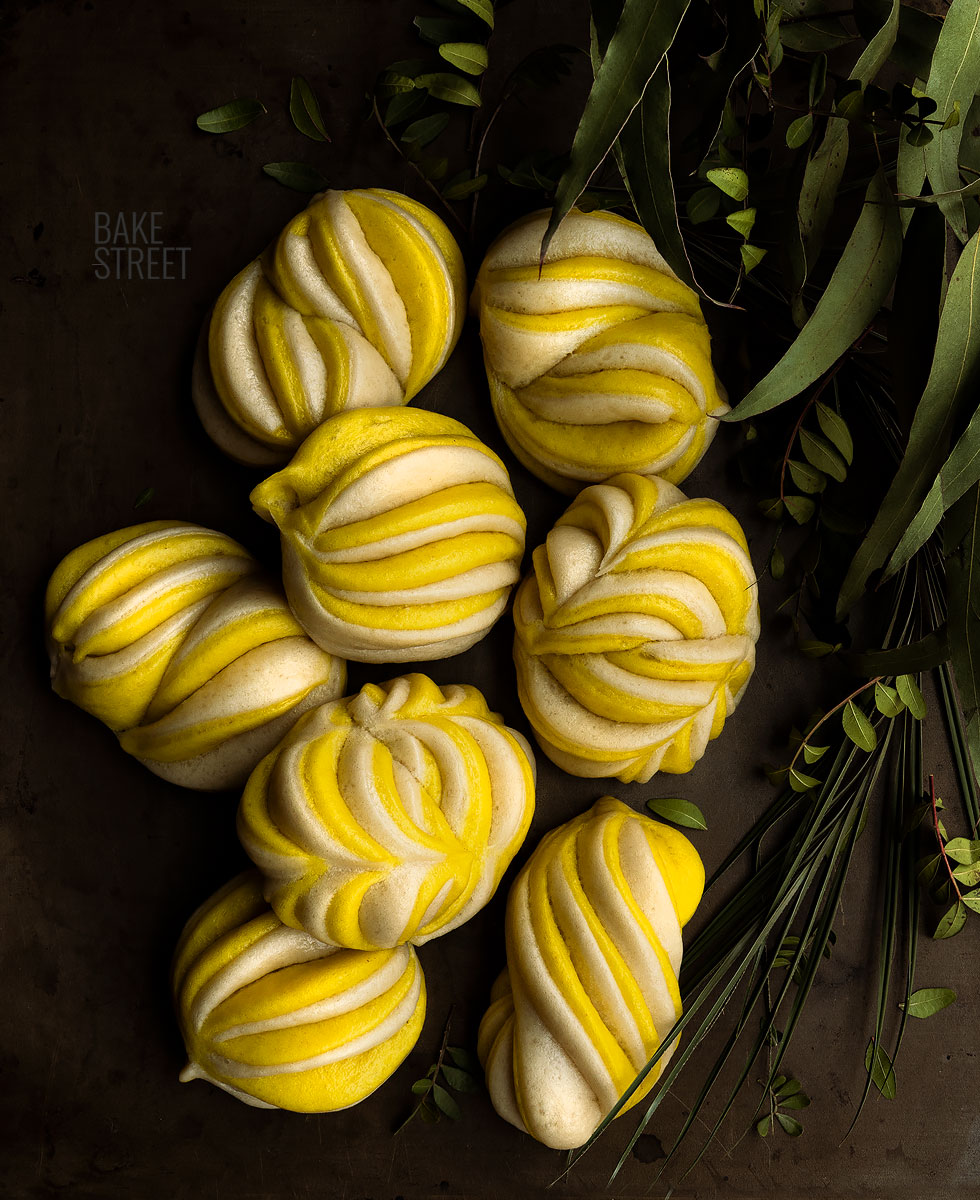
Preparing Mantou, Chinese yuzu steamed bun.
Since the traditional format is quite simple, we will go a step further and prepare the mantou in 4 different shapes. In addition, part of the dough will be flavored with yuzu paste (totally optional) to add some aroma, flavor and color. If we want to enhance a little more the yellow tone, we will use a little food coloring.
To make them I was guided by the videos of this girl I found on Youtube, she has many wonderful tutorials with a wide assortment of shapes. It was a little hard to choose… Since they were the first ones I made in this way, I decided to choose simpler patterns before getting into more complicated things.
When preparing these shaped mantou, it is important not to work with a dough that is too hydrated or too dry. If we over hydrate the dough, it will be difficult to shape them well and the layers will fuse together during cooking. On the other hand, if the dough is too dry, it will be difficult to join the piece well and we run the risk that it will open up too much during the fermentation process, even separating.
I recommend that you watch the shaping process at least a couple of times before carrying it out, to avoid something going wrong during this step or to avoid doubts at the very moment of its execution.
Recipe Mantou, Chinese yuzu steamed bun
WHITA DOUGH:
- 150 g cake flour
- 84 g water
- 2,5 g fresh yeast or 0.8 g dry yeast
- 1 g salt
YUZU DOUGH (YELLOW):
- 150 g cake flour
- 78 g water
- 7 g yuzu paste
- 2,5 g fresh yeast or 0.8 g dry yeast
- pinch of yellow coloring (I used a paste food coloring, it can be optional)
- 1 g salt
MATERIAL WE WILL NEED:
- Scraper
- Large bowl
- Rolling pin
- Fast cooker + steamer or metal steamer pot or Bamboo steamer
- baking paper
- chopsticks
Instructions
Preparamos white dough forMantou.
- In a large bowl add the flour together with salt, water and crumbled yeast. Mix with the help of chopsticks until a slightly amalgamated texture is achieved.
- Begin to work the dough with our hands, once it is more or less homogeneous, we move to a clean work surface and knead. We will knead until we obtain a smooth and homogeneous dough.
- Round the dough, cover with cling film and let it rest for 30-35 minutes.
Prepare the yellow yuzu dough for Mantou.
- In a large bowl add the flour together with salt, water and crumbled yeast. Mix with the help of chopsticks until a slightly amalgamated texture is achieved.
- Add yuzu paste together with a little yellow food coloring paste. Mix again until it is moderately integrated.
- Begin to work the dough with our hands, once it is more or less homogeneous, we move to a clean work surface and knead. We will knead until we obtain a smooth and homogeneous dough.
- Round the dough, cover with cling film and let it rest for 30-35 minutes.
Divide the dough in pieces.
- Divide the white dough into 9 equal portions, about 26 g each. Roll gently, without exerting tension and cover with plastic wrap to prevent them from drying out.
- Divide the yellow dough into 9 equal portions, about 26 g each. Gently knead, without exerting tension and cover with plastic wrap to prevent them from drying out.
Shape mantou.
- Lightly flour a work surface.
- Stretch 2 pieces, one white and the other yellow, with the help of a rolling pin, we will give a diameter of approximately 10 cm.
- Place the yellow piece on top of the white one, roll gently with the rolling pin to make them stick together.
- Shape as I show you in the video. I show you how to make 4 different shapes, in all of them we will have to cut the dough, once the white and yellow discs are joined, in at least 4 portions.
- Then proceed as I show you.
- Once we have shaped the mantou, brush lightly with olive oil and cover with film.

Let rise.
- Once all the mantou are shaped, place them in steamer trays and let them rest for about 15-45 minutes, depending on the outside temperature and the time it has taken to carry out the whole process. The pieces should grow approximately 50% from the moment we have shaped them. The pieces should not double in size.
- In my case they were 45 minutes to 69,8ºF/21ºC.
Steam cooking.
- Prepare the steamer to cook the mantou. In my case I have used my pressure cooker that allows me to cook with steam. I have also used the bamboo steamer trays to let them rest and cook.
- Once the water is boiling, reduce to medium heat and place the first tray with the buns.
- Place the lid, it is not necessary to close it, just overlap it, and cook for 15 minutes.
After this time, remove the lid slowly to allow the steam to escape, turn off the heat and leave the lid overlapped and with a hollow so that steam can continue to escape. Let stand for 2 more minutes. - Remove and place on a rack.
- Cook the rest of the pieces.
- Serve, they can be eaten warm or cold.

Notas
- This type of steamed bread is made with a flour called "pau". You can also use flour for pan bao. In my case I couldn't find it and online it was slow in arriving, so I used (in this case) cake flour. When I made longevity peaches, I used an all-purpose flour with a low protein index, 9%, and the result was also very good.
- You must control the final hydration of the dough. This will be conditioned by the type of flour you use, depending on the quantity and quality of its protein, it will admit more or less water. I advise you to add it little by little if you are not sure how it will behave. We need a dough that is docile and easy to handle, not sticky (due to an excess of hydration).
- I remind you that doughs are corrected with water, never with flour. So add water little by little to correct its hydration. We should never add flour to a dough because we change the formulation completely.
- Concentrated yuzu paste can be replaced by any other variety of concentrated fruit paste or use instead another element that adds color; spices, water from vegetables (spinach, beet...).
- On this occasion, we need to develop gluten more than when I made the peaches.
- It is a dough that should not be subjected to long fermentation processes. The reason is that when steaming them, the result would not be so aesthetic, and may even collapse and have a wrinkled appearance.
- When shaping mantou, we must try to touch the dough just enough. The more we touch or "rub" the dough, the more likely we will have a rough or wrinkled finish.
- In my case I have used coloring in paste, but you can use coloring in gel or powder.
- If you do not want to use coloring, you can omit them.
- They keep in perfect condition for 24 hours in an airtight container, although the ideal is to consume it at the same time that we make them.
- They can be frozen, individually wrapped in film, for 3 months. To consume them we will only have to leave them at room temperature.
- We can give a slight heat shock, if several hours have passed, before consuming. Or if we have defrosted them and we want them to be very fluffy. We can do it in the steamer, at low heat, for 3-4 minutes or in the microwave. In this last case we will cover the bread roll with kitchen paper dampened and drained with water, and we heat it for 1 minute approximately.

At home we have always loved mantou and all the preparations that resemble it. I had a time when every week, one of the days, I prepared Gua Bao for dinner. It was quite a ritual at dinner time, a lot of different fillings and sauces so that each of us could fill them as we liked.
Now I don't make them so often, not because we don't like them anymore, but because I'm in a time crunch and I try to leave dinner prepared in advance or we prepare simpler things. There are times for everything and now is a busier time ;)
I hope you enjoy them and let me know what you think of them!
I wish you a wonderful weekend!
Lots of love,
Eva
